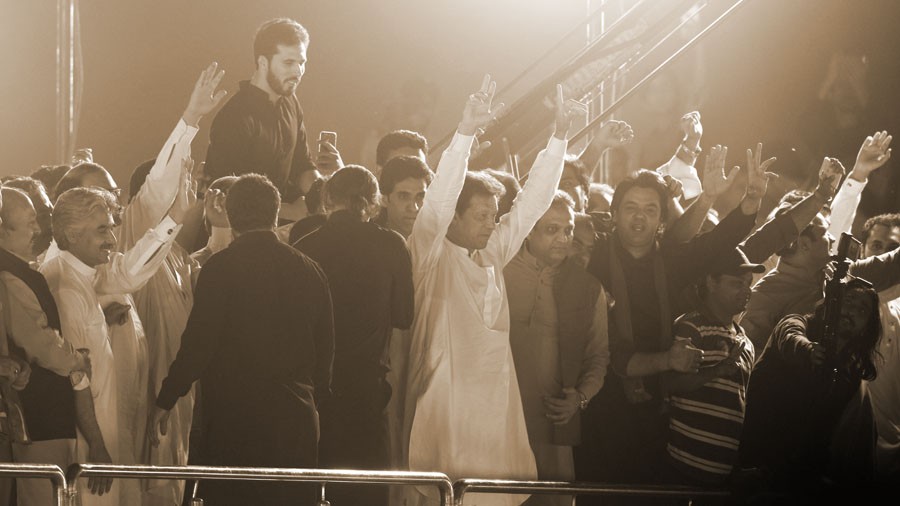
Seventy monsoons later, Pakistan is not new, no matter the claims otherwise

A ‘New Pakistan’ emerged in the sultry, humid heat of monsoon, as did the ‘Old Pakistan’, 70 years ago. What is the difference? This question begs examination. The Old Pakistan appeared on global map through a crucible of blood and gore caused by Radcliffe’s folly. It was the result of a political struggle by a political party with its voter base primarily in Central India. Like many million migrants from India the leading political party Muslim League also was a migrant political party, looking for support in the new country. It was readily available in the form of feudal elite at that time dominating politics of colonial state’s patronage. Access to state institutions was monopolised by the vernacular feudal elite. This erstwhile ‘electable’ feudal elite was incorporated in the constituency-deprived Muslim League.
Almost seven decades later a similar pattern has unfolded Pakistan Tehreek-e Insaf (PTI) has incorporated a brigade of electable elite from different political parties, so what has changed in the seven decades between old and new Pakistan.
Many things have changed and many things have remained the same. The change of modernity as an externality has affected the voter basis and voters choices. The elections of 2018 happened in an Urban Pakistan with new power centres and new elites. The feudal ‘elite’ has lost ground to nova riche urban elite with scattered sources of resources. The real estate elite, the corporate industrial elite, the professional elite et all have gradually captured the political space.
The pattern of voters has also changed over the last seventy years. The feudal elite had captive voters with limited choices, often between two feuding feudal families. A web of patronage defined the electoral outcomes. The insulated state worked through this web of patronage. The military dictatorships, thirsting for political legitimacy relied on ‘local governments’ creating new webs of patronage and consequently new ‘elite’. This ‘political engineering’ happened thrice.
Meanwhile, unnoticed political consciousness began to take root in the professional urban middle class. Many factors were behind this ‘change; inter-alia the emergence of media, the tele-density revolution, youth bulge and 9/11. The new voter base in the young urban middle class with hyper drive imagination was a change, it needed to be captured and that is "new".
Zulfikar Ali Bhutto’s emergence as a populist leader was abetted by military. Nawaz Sharif’s emergence as a political leader was rather obviously orchestrated with full support of military. Imran Khan also has a dual institutional backing of military in cohorts with a politicised judiciary; so what is ‘new’ in that. All of the above leaders were chosen by military; to support a charismatic political appeal. Bhutto’s political charisma and rhetoric was laden with leftist populist appeal and people followed him like a Pied Piper.
Nawaz Sharif’s political charisma was magical to the trading urban middle class who hitherto had been kept out successfully from the political space by the entrenched feudal elite. Bhutto’s predominantly socialist rural policies had disgruntled the conservative urban trading class, who wanted it on political and policy space to safeguard their interests. They followed Nawaz Sharif like a Pied Piper. Imran Khan’s political charisma captured the imagination of the new urban and young professional middle class of Pakistan, they wanted their own political space and they followed Imran Khan like a Pied Piper as their fathers and mothers had followed Nawaz Sharif and that is "new".
An analogy can be drawn here with Economist Rostow’s (1960), ‘Stages of Economic Growth’. The rural, traditional and agrarian society with feudal political dominance led by Bhutto was replaced by the political space capture by trader, manufacturer urban middle class led by Nawaz Sharif. With emergence of albeit nascent consumption economy of Pakistan, Imran Khan now leads the ‘charge’ of young, rebel, angst driven urban and professional middle class; stages of economic growth are reflected in the share allocation of political space, its natural but it’s not "new". The externality of modernity is the newness, what is not new is that all of the aforementioned political changes were political projects of military, making adjustments to the changes of modernity, they are just keeping pace. It’s not ‘new".
The colonial state structure inherited by a migrant political party could not be maintained because political parties by design are not capable of maintaining such authoritarian insulated state structures based on restricted access. The migrant political party in 1947 with some struggle handed over the political space to a bureaucracy-military alliance, whose institutional cohesiveness gave them the capability to capture the political space and maintain the patronage structure.
Military with its monopoly of violence quickly controlled this core political space, sharing it with bureaucracy or time and again with judiciary, whichever partner was suitable. Whilst controlling the core of political space the outer fringes are managed and appearances kept; and that is not ‘new" at all. Seventy monsoons later Pakistan is not new, whosoever claims that, is only seeing Piper’s dream. However, the dream must live and it shall live.